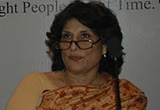 I wrote a BMJ article about the Food Security Bill in India after it was introduced in parliament in December 2011. On 5 July 2013 the National Food Security Act 2013, (FSA) was promulgated by ordinance, without discussion or debate. This is a somewhat sticky thing to do in a democracy, with parliament scheduled to meet just a few weeks away.
I wrote a BMJ article about the Food Security Bill in India after it was introduced in parliament in December 2011. On 5 July 2013 the National Food Security Act 2013, (FSA) was promulgated by ordinance, without discussion or debate. This is a somewhat sticky thing to do in a democracy, with parliament scheduled to meet just a few weeks away.
The FSA is a little different from the original bill. For instance, the use of the word “right” that was wrongly used in the bill has been removed. Instead, the benefits are termed as “entitlements,” but remain undefined in the act. The term “food security” continues to have a dead-end definition, for example, “the supply of the entitled quantity of food grain and meal specified under chapter 2.” This is 5 kg of foodgrains per person per month, which includes rice for 3 rupees per kg, wheat for 2 rupees per kg, and coarse grains, like millets, for 1 rupee per kg.
As I have said earlier, this entitlement, even with proper implementation and targeting, can prevent hunger or starvation, but by no definition be termed as “food security.” The preamble continues the fiction of the “lifecycle approach,” (another undefined expression), making no specific provision for the adolescent girl, the centre of the lifecycle, whose nutritional status is globally the worst (UNICEF State of the World’s Children Report 2011) and the severely undernourished people. But fortunately, insensitive provisions regarding the identification of starving persons have been removed.
Existing nutrition programmes for children under the age of six, expectant and nursing mothers, and school lunch programmes, are bunched up and given the label of “entitlements,” without any dietary enhancement. A welcome addition is a maternity benefit of 6000 rupees, although the cost-sharing of this is yet to be finalised.
The FSA continues to rely on the leaky public distribution system (PDS) for implementation, with a rather weak aspiration that “the central and state governments shall endeavour to progressively undertake necessary reforms in the Targeted Public Distribution System in consonance with the role envisaged for them…”(Chapter 7). This will indeed be difficult, as the corruption of the PDS networks is so widespread and deep, that they are beyond reform. They must be completely restructured with substitute delivery systems put in place, as has been done in some states of India.
Several loose ends in the ordinance are yet to be tied up by the central and state governments—additional budget allocations, foodgrain allocations, agreement on cost sharing between centre and state governments, and transportation costs—for which rules have yet to be issued by the government. The creation of adequate storage facilities, licensed distribution networks, and most importantly, defining criteria and identifying priority households are the responsibilities of the states, which is all very tough and time consuming.
Questions are being asked about why an arbitrary upper limit of 75% rural and 50% urban population has been placed without any rationale or criteria for eligibility to receive subsidised foodgrain. These figures do not correspond to any poverty figures currently in use. Experience also shows that with non-differentiated targeting, benefits are generally grabbed by those who are socially stronger, by middlemen, and by black marketeers.
The ordinance must still be ratified by Parliament within six weeks after it meets on 5 August. Hopefully, the debate and rules from government will clear the prevailing confusion.
The views expressed are personal
Veena S Rao is advisor, Karnataka Nutrition Mission, and advisor, Britannia Nutrition Foundation.